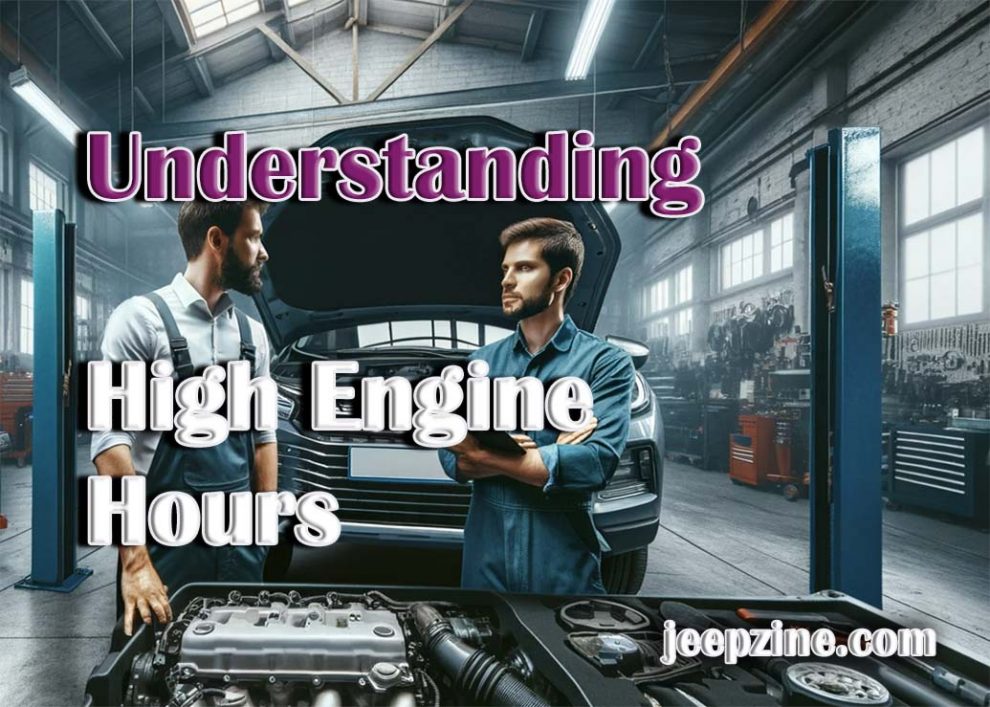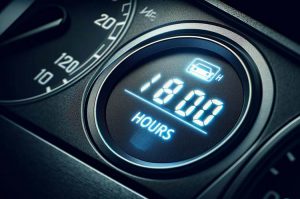When buying a used vehicle, one of the most important factors to consider is the engine’s total accumulated operating hours. But what constitutes high engine hours, and how can you evaluate if a used vehicle’s engine hours are reasonable? This article takes an in-depth look at defining high engine hours for different types of vehicles, plus factors to watch for when evaluating used vehicles with high engine hours.
What Are Engine Hours
Engine hours refers to the total accumulated time a vehicle’s engine has been running. Engine hours are commonly tracked on vehicles like boats, RVs, ATVs, construction equipment, agricultural equipment, semi trucks, and other commercial/industrial equipment. For these types of vehicles, engine hours give a more accurate picture of wear and tear than mileage.
Engine hour meters track run time whether the vehicle is stationary or moving. Typical passenger vehicles do not have hour meters, as mileage is a more useful metric. However, some passenger vehicles used commercially may track both miles and engine hours. In general, higher engine hours equate to more wear, just like higher mileage.
Checking Used Engine Hours
When evaluating a used vehicle with an engine hour meter, it’s important to verify the hours. Some key steps include:
-
Checking that the engine hour reading appears logical based on the vehicle’s age and use. Very low hours on an older vehicle may indicate gauge tampering.
-
Reviewing maintenance logs to ensure hours increase steadily over time. Look for inconsistencies that could indicate hour meter rollbacks.
-
Comparing hours against similar vehicle models/years to evaluate if hours seem excessive or normal. Higher hours require more scrutiny.
Signs of High Engine Hours
Higher engine hours can indicate excess wear. When evaluating used high hour vehicles, watch for followings. Engines with high hours may show power and compression loss, difficulty starting and idling, smoky exhaust from worn cylinders and valves, increased oil consumption, coolant leaks from aging hoses and water pumps, noisy valves and timing chains, evidence of overheating like warped heads, and other issues. Thoroughly test driving, inspecting, and reviewing maintenance on high hour engines is critical to identify developing problems. Expect more frequent rebuilds and overhauls down the road.
Key Factors to Consider
What constitutes high hours depends on several factors:
Vehicle Type: Hours for light/medium duty trucks may range 50,000-100,000. Heavy duty trucks see 250,000-500,000 typically. Boats often range 2,000-5,000 hours. Construction equipment reaches 10,000-20,000.
Age: Older vehicles tend to have more accumulated hours. Assessing if hours align with age is key.
Use: Commercial, agricultural, and industrial vehicles accrue hours faster with constant operation.
Condition: Well-maintained engines can tolerate higher hours better. But neglected engines wear quicker.
Model: Hour lifespan varies across manufacturers, engine types, fuel delivery, technology, etc. Research typical ranges.
Conclusion
While definitions of high engine hours vary, prudent used vehicle buyers will scrutinize accumulated hours against the vehicle’s age, condition, use case, model lifespan averages, and their own needs. Comprehensive inspections and maintenance history reviews take on increased importance for older and higher hour vehicles. An informed, meticulous approach allows buyers to make smart decisions when evaluating used vehicles based on engine hours. Consider both the vehicle’s intended use and how the engine hours align with your required remaining service life. For some pointers on maintaining your Jeep, check out our article on the best spark plugs for Jeep models. With research and diligent inspection, you can shop confidently even when engine hours are higher.


 Checking that the engine hour reading appears logical based on the vehicle’s age and use. Very low hours on an older vehicle may indicate gauge tampering.
Checking that the engine hour reading appears logical based on the vehicle’s age and use. Very low hours on an older vehicle may indicate gauge tampering.